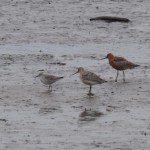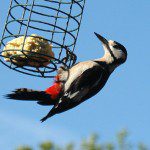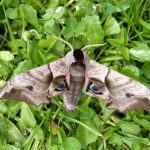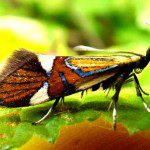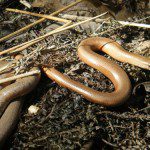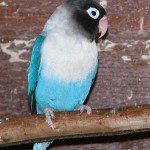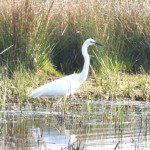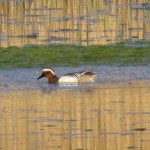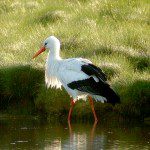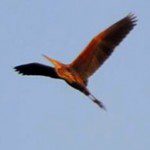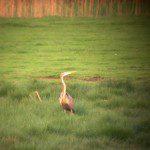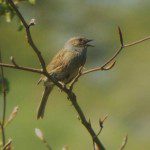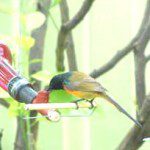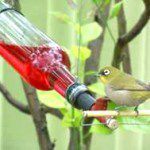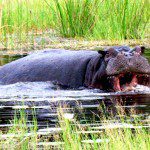Axe Estuary Birds No 156 May 15th 2011
NB: The following is reproduced by kind permission of Axe Estuary Birds. Full credit goes to the team that produces the newsletter (see the bottom of the post for specific details). Photographs are credited throughout the text although we are working to preserve the original layout wherever possible in the future.
The Birds
Karen Woolley says “Over the long bank holiday weekend I’ve only managed a couple of hours birding, that being a visit to the marshes on Sunday evening, where I found a nice Wood Sandpiper on the Colyford Common Scrape. It was ‘mucho distant’ as is usual here so I didn’t even attempt a photo of it.”
And Steve Waite was a bit disappointed with his sea watching “Well I’ve given the sea as much effort as I could afford today 7th May – but to no great avail. I sea watched; 06:00 – 07:00, 08:00 – 08:30, 11:00 – 12:15 and 16:45 – 17:30. I did most of these from the Spot On Kiosk, except the late morning stint when I watched from Seaton Hole.
As the day went on the conditions got better and better, but the birding didn’t! All that went in the notebook from these watches were…
62 Gannets, 25 Manxies, 3 Kittiwake, 6 Sandwich Tern, 1 Common Tern, 7 Razorbill, 4 Black-headed Gull.
Yes it really was THAT bad!
As well as the sea watching, I managed a sweep along the Estuary which was rather fruitless, but an early evening visit to Black Hole Marsh was a bit better. 150 Swallow, 80 Swift and 60 House Martin were feeding over the lagoon – and all went up when my first Hobby of 2011 came bolting through. On the water, a drake Shoveler was a tad unusual for this time of year, but despite my best efforts – no Temminck’s Stints yet. I see one place in Notts has got five of these little beasts – that’s just greedy!”
Jan Johnson writes “If you remember I emailed you recently about a possible sighting of an Ortolan Bunting at the Seaton Hide on Sunday 10th of April. Having searched the web for photographs to confirm or deny our suspicions, I have found some recently taken pictures that confirm to us both that we really did see a female Ortolan” This must remain as a “possible” – it would be only the third on our patch, and there have been no other reports.
A visitor from Nottingham tells me he was walking along the River Coly near Colyton on the 8th and saw a Kingfisher, actually visiting its nest.
Bob Oliver sent his “Snippets from the Colyford log pages for the first week of May. It is nice to see that a Wood Sandpiper has shown well on the scrape as well as a couple of Ruffs and Bar-tailed Godwits in addition to the more usual birds for this time of year. Swifts have duly appeared in the first week of May although my first was a single bird above Umborne Bridge in Colyton on 30th April.”
Michael Kerr writes from Seaton “The Swifts were first heard in our eaves this year on May 5th but were not seen coming and going until the next day. Up to 5 have been seen flying together but so far it appears only two nest sites are occupied. Disappointing as the numbers have steadily declined from at least 8 nests in 2004.”
Simon Wakely sent this rather nice snap from his garden.of a Woodpecker.
And Sue Smith captured this charming little group of waders at BHM.
Moths
As if to make up for his disappointment with birds, Steve Wate had 18 species of moth in his trap on 11th. Perhaps the most spectacular was this Eyed Hawkmoth.
3 Buff-tip, 1 Cream Wave, 1 Brown Silver-line, 1 Brimstone, 2 Muslin Moth,
1 White Ermine, 1 Eyed Hawkmoth, 1 Poplar Hawkmoth, 2 Flame Shoulder,
1 Large Yellow Underwing, 7 Heart and Dart, 1 Shuttle-shaped Dart,
1 Common Quaker, 4 Vine’s Rustic, 1 Setaceous Hebrew Character, 1 Lychnis, 5 Treble Lines, 1 Nut-tree Tussock.
Peter Vernon found a micro moth “A very small micro moth called Alabonia geoffrella which I took this morning (14th) after finding a very obliging individual sitting on a leaf in the hedge.”
News from The Reserves
Everybody who visits the new Tower Hide at Black Hole Marsh says how wonderful it is, with views over the river and the reserve. For those less able, there are long term plans to provide a ramp, but it could be quite a while before it is built. In the meantime, handrails will be provided by the first steps, and I find coming down from the hide safer backwards hanging on to both handrails!
Alterations to the Field Studies Centre are under way, and the feeders will be moved to make them more visible from the hide. Adjacent, there are plans to build a Field Classroom at ground level.
Work will start on the Access for All path at the Borrow Pit at Seaton Marshes on 1st June. This will provide a path approximately half way round on the west side. The Borrow Pit will be closed to visitors while this work is going on.
All in all, EDDC Countryside Team continue to do us proud – and I am told there is much more planned!
News from Holyford Woods
Thank you to those who came to enjoy and support Bluebell Day, including both existing Friends, and those who joined or generously donated on the day. Despite a hiccup in the early transport arrangements, and afternoon thunder, lightening and hail stones, the day was a great success. The guided walks, organised by Fraser Rush and his team from East Devon Countryside department, are always popular, strolling through the blue carpeted Woods from dawn to dusk, and back for the excellent tea produced by the local Colyford Memorial Hall group. The stalls were as popular as ever, filled with donated home-made jams, jewellery and plants.
The sound of birdsong which greets one at dawn is very special, both down in the valley and later seated up on my seat. From up there the smaller bird song really is a chorus, but that of the bigger birds such as the Blackbird, Song Thrush and Mistle Thrush is loud and clear. For those who cannot rise early, there is an evensong at dusk, but not as glorious. On a sad note there is only one Moorhen chick left, but a second brood is possible. The bluebells are fading rapidly but not yet the Ramsons. Rampant Goosegrass is taking over everywhere. From now onwards this is a good time to walk the path below The Hangings for the variety of wild flowers. The regeneration of the hillside now shows well here with birch, oak, ash, and beech saplings rising through brambles, particularly along the path edge. As yet I have not found any Roe Deer young. Jean Kreiseler.
The Trivia
Maggie Dilley writes “We had lots of advice from newsletter readers about our slow worms last autumn. We really wanted to renovate the compost bins so we made a pile of dead bracken and crocosmia leaves, covered it with 2 old bits of carpet and Ray carefully moved 5 slow worms to the edge of it. We resisted the urge to “see if they were alright” over winter and were rewarded about a month ago with one slowworm in the new compost bin. Eventually more arrived and one day there were 8 in there. When we uncovered the temporary pile it was empty.”
A little while ago I mentioned that we had a pair of Mallards visiting our front garden here in Colyford. Well, they were joined by a second drake, and there was a noisy and fierce battle. But now, several days later, the two drakes seem best of friends, grooming each other while the female stands by at a little distance, seemingly unconcerned!
Mike Dannat tells of an unusual encounter at South Chard “Late afternoon brought a really unusual new species in the garden. I was in my greenhouse when I heard a strange but vaguely familiar call. It was coming from the TV aerial atop my neighbour’s house and its silhouette suggested a small parrot, later identified as a Blue Masked Lovebird. This morning its activities were interrupted when it discovered glass windows. The last I heard it was alive in a box and we have volunteered to take it to Ferne Animal Sanctuary near Chard.”
Diary Dates
Sunday 22nd May 5pm – 7pm Birds from the Tram with Ian Waite. Book and pay £7.50 each, in advance with Seaton Tramway on 01297 20375.
Friday 27th May 9 pm Nightjars with Ian Waite. Meet Peak Hill C P Sidmouth (SY67811)
Tuesday 31st May 9am -10am Birds from the Tram for Juniors with James Chubb Book and pay in advance with Seaton
Tramway on 01297 20375.
This twice-monthly email newsletter is freely available to anyone who would like it, as is a periodic one about the activities of the East Devon Local Group of the Devon Wildlife Trust. Just send me an email with Axe Estuary Birds and/or East Devon DWT in the subject line. Also, for those without a computer, I will send a copy by post if you would like to send me some stamps.
Thanks to those who keep me informed. Please continue to tell me of any unusual, interesting or amusing sightings, and what is about locally, and send any photos you would like to share.
Mike, Jean and David. (and many others!) davidwalters@eclipse.co.uk. tel. 01297 552616 Mobile 0779 1541 744.











